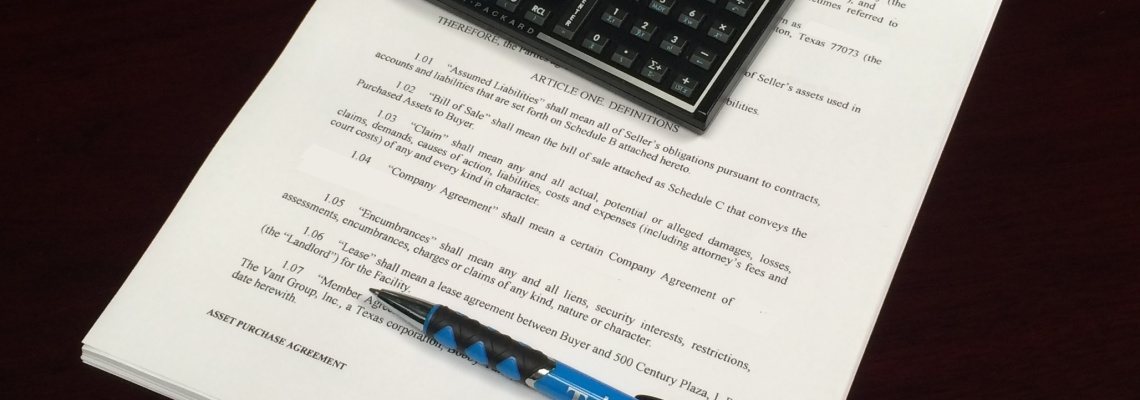Understanding How External Factors like Interest Rates Affect the Sale Price in an M&A Transaction
By Dirk Armbrust
Sellers often have a number of factors to consider in selling their business… What’s my business worth? Am I ready? Is the team ready? Is this a good time to sell? The list goes on. The plain truth is that it is often all too easy for a business owner to decide to focus on the day-to-day aspects of running their business, and delay important strategic decisions… like planning and executing a business EXIT.
But… external factors often have a significant impact on M&A transactions and the values of individual businesses. Ask any baby-boomer at the helm of an oil & gas exploration company who was considering selling back in 2013. Back then, crude was over $100 per barrel. Now, with sub-$40 oil, their EBITDA is severely reduced… which has directly impacted their enterprise value. How many years past their planned retirement date are they going to have to keep working… all in the hopes of “waiting-out” the oil market?
That’s the oil patch. What about the rest of the marketplace? This is where interest rates come into the discussion. It appears that historically-low rates are behind us. The truth is, interest rates absolutely impact the sale price of a business.
“The Three People”
“There are three people in every transaction… the seller, the buyer… and the banker.”
I’ve been in multiple seller meetings with our founder Alex Vantarakis. I often hear him say the following when helping sellers understand their valuation: “There are three people in every transaction… the seller, the buyer… and the banker.” You see, nearly every M&A transaction is funded, at least partially, with bank debt. And for the bankers, the numbers must absolutely make sense.
The main number that any lender will look at is the debt coverage ratio. The debt coverage ratio simply measures a business’ ability to pay, or cover, debt servicing costs… namely principal and interest. To an SBA lender, a debt coverage ratio of about 1.25 is their likely minimum threshold.
 The annual interest rate associated with the debt in any M&A transaction is driven by the prevailing market interest rate… measured as the Prime Rate.
The annual interest rate associated with the debt in any M&A transaction is driven by the prevailing market interest rate… measured as the Prime Rate.
How the Math Works
A lender will typically review the past three years of operating performance to determine the annual cash flow they will use to measure debt coverage ratio… the numerator. The denominator, cost of servicing debt, is more straightforward. It’s the simple math of principal and interest payments associated with the loan.
The interest payments are determined by the principal amount, and the interest rate on the loan. The interest rate is typically based upon the Prime Rate and some form of Premium. While Premiums tend to stay relatively flat, the Prime Rate is subject to moves like the December rate hike.
Let’s take a typical SBA-funded M&A transaction as an example:
- A business doing between $300,000 and $350,000 in cash flow.
- Seller and buyer have agreed to a purchase price of $1,200,000.
- Buyer will pay 10% down, the seller has agreed to carry 20%, and the bank will fund the rest.
- New owner will require a $75,000 annual minimum salary.
Here’s the problem. When considering debt flow coverage when compared to the business’ 2012 results, the lender will balk at the 1.20 debt flow coverage ratio. Remember, 1.25 is the magic number.

So what happens? The seller and buyer have to go back to the negotiating table to see if they can agree on a new purchase price that meets the 1.25 number. In this case, the number is $1,147,585… about a $52,000 haircut to the seller. Buyer will probably be fine with that. What if the Prime Rate goes up another half point? Well, that would be an $82,720 impact. If the Prime Rate returns to its 2006 level (just before the Great Recession), the seller will have to swallow a transaction price of $896,971. Over $300,000 less than the original $1,200,000!
Conclusion
Yes. External factors like interest rates do matter. No one knows when the next interest rate hike will come… but it likely will. If you are a potential seller and are asking yourself if this is the right time to sell, you should talk to someone at The Vant Group today. We can perform the detailed analysis necessary for you to know what your business will likely sell for (and be financed for) today. Then, we can help you build and execute the best exit strategy possible. We are passionate about helping business owners realize the value they have built into their business. Converting that value into cash may be the best strategy in a rising-interest-rate environment.



